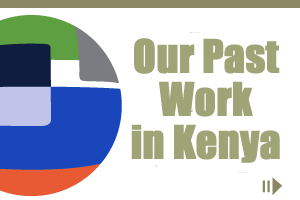(November 17, 2010) “He just lies as we wait for what will happen; we have no money to take him to the hospital and the government only makes empty promises,” says Grace Wakio, a middle-aged mother of five. Grace is talking about her neighbor, who is lying on the floor in a tattered tent. He’s been diagnosed with brain cancer and appears unaware of his circumstances.
Grace is the deputy chairperson of the Ya Mumbi Internally Displaced Persons (IDP) Camp. Her responsibility is the welfare of about one hundred families who call this camp home. The families were displaced by the Kenyan post-election violence of 2007-2008, which was triggered by a disputed presidential poll. She says their plight would have been easily forgotten had it not been for the media.
“Life in the camp is difficult; at the moment three people in these shacks you see here are critically ill. We have met the leaders but there is absolutely no assistance coming from the government. We are an eyesore that the government would want to wish away. We had been promised three new roomed houses and land by this time. It has been two months since but everything has suddenly gone quiet. But we will stay here until something is done.”
Residents of the camp are only too familiar with the formidable challenges of life: sleeping on the floor in the extreme cold, the outbreak of disease, difficulty finding water – even though the police post next to the camp has running water. Yet Grace has hope.
“The media report accurately when they visit us here. It shows the world that we are still here much as the government has forgotten about us. The media keep our stories alive,” says Grace.
The Kenyan media was accused of having fuelled the post-election violence, particularly some vernacular media, on which forms of hate speech were broadcast. As an intervention, Internews introduced a conflict-sensitive approach to journalism. Journalists from both community and vernacular stations are guided through fair, accurate and balanced reporting of political developments in Kenya.
Key to the Conflict Sensitive Journalism project are stories centered on the National Accord and Reconciliation Act and its reforms designed to project the country towards recovery after the political crisis. Immedia measures to end the humanitarian crisis, including resettlement of the internally displaced, like those at Ya Mumbi camp, were among the top priorities of the Act, but almost three years later, the displaced here have yet to be resettled. IDPs continue to live in informal camps without access to basic services. Many of the children have been denied access to schools and health care is poor – a reminder of the human scars of the conflict.
Grace hopes the media will keep their story alive, until a solution is found.
The Internews Conflict Sensitive Journalism program in Kenya is funded with a grant from the United States Agency for International Development.




